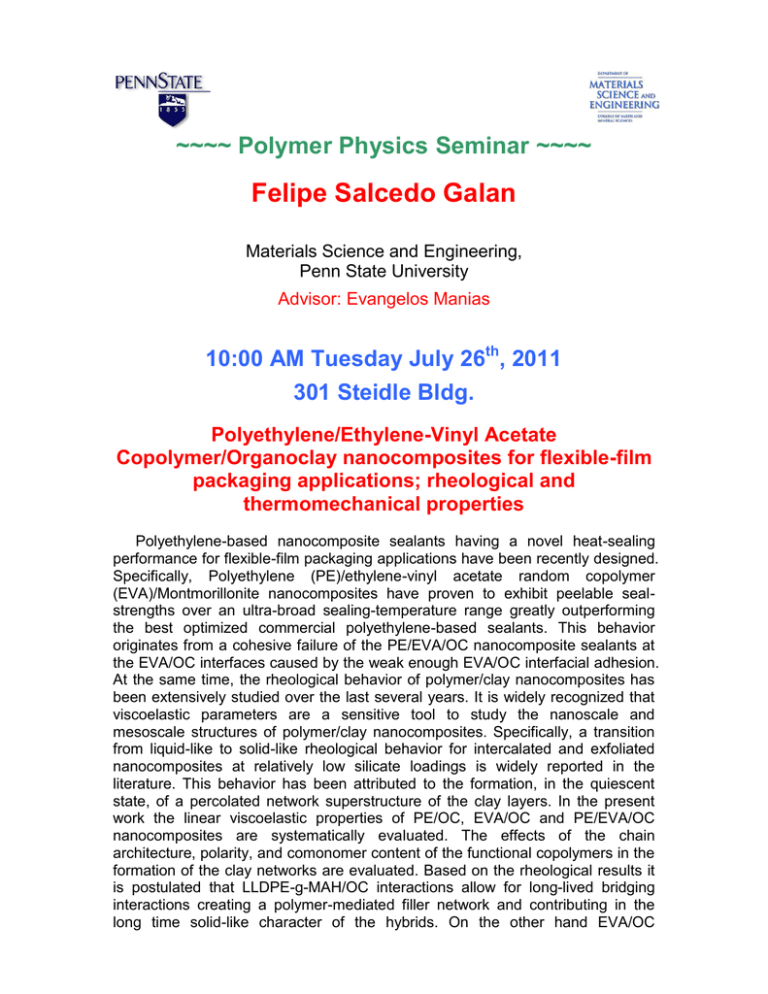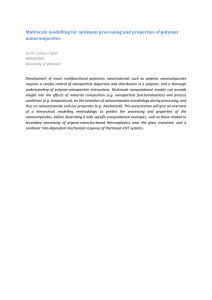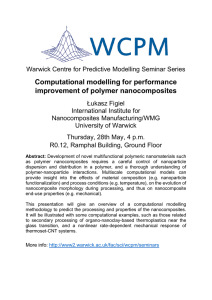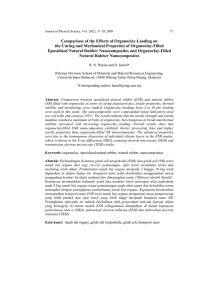Felipe Salcedo Galan ~~~~ Polymer Physics Seminar ~~~~
advertisement

~~~~ Polymer Physics Seminar ~~~~ Felipe Salcedo Galan Materials Science and Engineering, Penn State University Advisor: Evangelos Manias 10:00 AM Tuesday July 26th, 2011 301 Steidle Bldg. Polyethylene/Ethylene-Vinyl Acetate Copolymer/Organoclay nanocomposites for flexible-film packaging applications; rheological and thermomechanical properties Polyethylene-based nanocomposite sealants having a novel heat-sealing performance for flexible-film packaging applications have been recently designed. Specifically, Polyethylene (PE)/ethylene-vinyl acetate random copolymer (EVA)/Montmorillonite nanocomposites have proven to exhibit peelable sealstrengths over an ultra-broad sealing-temperature range greatly outperforming the best optimized commercial polyethylene-based sealants. This behavior originates from a cohesive failure of the PE/EVA/OC nanocomposite sealants at the EVA/OC interfaces caused by the weak enough EVA/OC interfacial adhesion. At the same time, the rheological behavior of polymer/clay nanocomposites has been extensively studied over the last several years. It is widely recognized that viscoelastic parameters are a sensitive tool to study the nanoscale and mesoscale structures of polymer/clay nanocomposites. Specifically, a transition from liquid-like to solid-like rheological behavior for intercalated and exfoliated nanocomposites at relatively low silicate loadings is widely reported in the literature. This behavior has been attributed to the formation, in the quiescent state, of a percolated network superstructure of the clay layers. In the present work the linear viscoelastic properties of PE/OC, EVA/OC and PE/EVA/OC nanocomposites are systematically evaluated. The effects of the chain architecture, polarity, and comonomer content of the functional copolymers in the formation of the clay networks are evaluated. Based on the rheological results it is postulated that LLDPE-g-MAH/OC interactions allow for long-lived bridging interactions creating a polymer-mediated filler network and contributing in the long time solid-like character of the hybrids. On the other hand EVA/OC interactions promote the exfoliation of the organoclays aiding in the formation of fillers-fillers percolated networks at lower organoclay contents. The effects of these different functional polymers/OC interactions and rheological behaviors on the thermomechanical properties of the nanocomposites are discussed.




